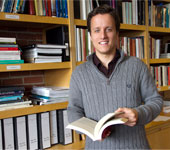by Jan Raska, PhD, Historian
(Updated October 1, 2020)
Introduction
What types of sources do historians encounter when they research and write about history? In conducting research for a project, historians use primary and secondary sources. In this post, we are going to discuss the second concept presented in the Historical Thinking Project (www.historicalthinking.ca) —the use of primary source evidence.[1]
What is a Primary Source
A historian has to be well-versed in the available primary and secondary sources in their field of expertise. Where a historian makes the greatest contribution to knowledge is by finding, analysing, and interpreting primary source materials. Here is a simple chart to help you decipher what the differences are between primary and secondary sources. Primary sources are documents or physical objects that were created during the time under study. As a result, these sources provide us with a first-hand or insider view of the event in question.
Examples of primary sources:
- Maps
- Diaries
- Letters
- Speeches
- Oral Histories
- Autobiographies
- Government Records
- Artifacts
- Artistic Works
What is a Secondary Source
Secondary sources are different from primary sources in that they analyze and interpret primary sources. These sources are often produced after a significant amount of time has passed since the event in question.
Examples of secondary sources:
- Textbooks
- Encyclopedia
- Magazines
- Journal Articles
- Books (discussing a past event)
- Book Reviews
- Commentaries
Using Primary Sources during Research to Support Exhibit Development
Originally, our 2012 temporary exhibit, Shaping Canada: Exploring Our Cultural Landscapes was to include Temporary Foreign Workers as an example of a recent community of migrants who came to Canada in search of economic opportunity and a better life. A majority of these workers returned to their country of origin including Mexico, Guatemala and El Salvador after their work contracts expired. In some cases, the signing of a work contract forced many workers to agree that they did not have access to permanent residency. In seeking to represent Temporary Foreign Workers as an exhibit case study, we initially discussed including members of the El Salvadoran community in Brandon, Manitoba — who were hired by Maple Leaf Foods at their local meat processing plant. Since many of these individuals were seasonal migrants, primary sources on their experiences in Canada remained sparse. Within this context, oral histories and newspaper clippings could have been useful primary sources.
Another group which we chose to include in our summer exhibition was the Lebanese community in Halifax, Nova Scotia. In researching the history of the community in the city, we quickly realized that a limited amount of scholarship was available. I visited the Public Archives of Nova Scotia in search of primary source material. I was able to review minutes of meetings held during the 1970s and 1980s of the Canadian Lebanon Society whose primary role was to resettle Lebanese immigrants in Halifax during the twentieth century. This primary source was reproduced onto microfilm and stored at the Public Archives.
Once I had the microfilm reel containing the primary source documents before me, I put on my historian’s thinking cap! What does this mean? In assessing this archival source, for example, it is important that we take it at face value by contextualizing the period in which it was written, and avoid analyzing it through a contemporary lens.
Conclusion
Similarly, the public should be cognizant when primary source materials are included or missing from a museum exhibit. The use of primary sources in public history is an important component of the historian’s pool of available sources from which to critically analyze the past. Whether by choice or due to a lack of historical sources, the inclusion or absence of primary source materials speaks volumes about the project under study.
Next time you visit an exhibit make sure to put on your historian’s thinking cap and be critical!
- Historical Thinking Project, “Concepts,” accessed: 20 November 2012. http://historicalthinking.ca/historical-thinking-concepts
